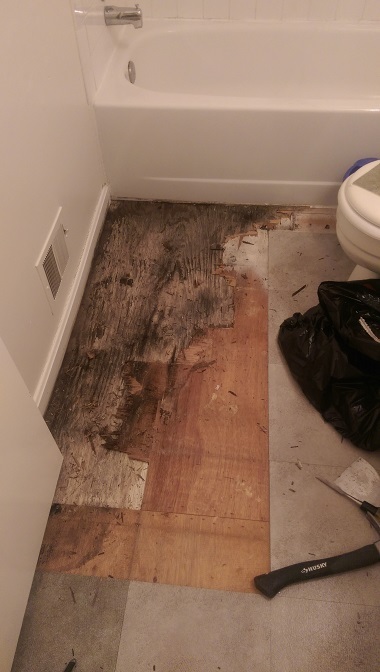How do you actually feel in relation to Common Causes of Water Damage in a Bathroom?

The washroom is incredibly vulnerable for wet buildup as well as prospective water damage due to the constant use water in it. This short article provides simple examination methods to help detecting water damages dangers.
The regular use of water in the washroom makes it very susceptible for damp build-up and potential water damages. By evaluating it on a regular basis, you can minimize water associated damages.
The adhering to collection of assessments is easy to perform and also ought to be done as soon as in every 3 months in order to keep your washroom in good shape and to avoid potential water problems triggered by the bathtub, the shower, pipeline joints and plumbing, sinks, closets, and the bathroom
Do not neglect executing these assessments and be thorough while executing them. Bear in mind that these simple examinations can save you a great deal of cash by providing very early indications for water damages
Sinks and Cabinets
Sinks and also cupboards are exposed to wetness and moisture daily and also are typically forgotten. Examine consistently under the sink as well as on the kitchen counter above it. Repair any kind of drip in the trap as it might suggest drain troubles. Look around the sink, sluggish draining pipelines may show a blocked drain. Replace sink seals if they are split or loose.
Tub and also Shower
The shower and tub call for special interest and also maintenance. Examine the tiles as well as change if cracked. Ensure that there is no missing cement in between the tiles. Check and also replace broken caulking at joints where the wall surfaces fulfill the floor or the bathtub. Blocked drains pipes and also pipes issues will certainly protect against the bathtub from drying as well as might show serious issues underneath the bath tub. Consult with a professional right away to prevent structural damages. Take notice of stainings or soft areas around the bathtub walls as they may suggest an inner leakage.
Plumbing
Signs for water damages are hard to spot because the majority of pipelines are installed inside the walls.
Pay special attention to flooring as well as walls wetness as well as spots as they might show an unseen plumbing trouble. Examine wetness degrees in adjacent spaces also.
The Bathroom
The bathroom is a prone water joint. Examine the water lines and also look for leakages around the bathroom seat, in the pipe, as well as under the water tank. If you spot any indications of wetness on the flooring around the bathroom, look for leakages in the toilet edge and also container seals.
Realize that hanging commode dish antiperspirants raises the opportunities for clogs.
Water Damage Signs In The Bathroom To Avoid Cleanup
Musty smell
This is one of the easiest signs to catch because musty smells are so odorous. The damp, earthy, moldy smell should be a big red flag. The smell will develop when moisture gets trapped in surfaces, and begins to facilitate mold growth. Leaking pipes under cabinets, inside walls, and behind shower fixtures will cause moisture to stay trapped and not dry, which will lead to mold growth and spread. As soon as you notice any musty smells in your bathroom, have it checked for hidden water damage and cleanup signs.
Visible mold
If the smell isn’t there to give it away, sometimes you will actually see mold growth. Finding mold in your bathroom is a serious problem, because mold is very harmful to your health. By the time mold growth is visible, it also means that water damage has already occurred and been present for some time. The only way the mold problem can be resolved is to find the source of the moisture and get it stopped. To safely and adequately remove mold, you need to have professionals handle the remediation. Do not waste any time in getting mold problems addressed, fixed, and sanitized so that you can protect you and your family from the many respiratory symptoms caused by mold exposure.
Damaged floors
Bathroom floors should be able to withstand some exposure to water while still remaining in good condition. However, when excess exposure or water leaks occur, they will begin to damage even the most water-resistant flooring. If you notice any cracking, bubbling, staining, or warping on your bathroom floors, there is probably a water leak somewhere causing the distortion. If you notice areas of the floor have become softer, or even have a spongy feeling, there is probably damage to the subfloor. Subflooring is typically made up of plywood. When plywood is exposed to water or moisture, it will absorb it. Once it has become saturated, the weight of the excess water will cause the wood to swell and soften. Check the floors in your bathroom frequently to catch any of these sings before they lead to damaged subflooring.
Changes on walls
When water leaks behind walls, it will cause changes in the drywall. Peeling plaster, blistering paint, and soggy wallpaper are all good indicators that excess water is building up behind the wall. Water leaking behind drywall will cause it to swell and be soft to the tough. If you start to notice gaps along the trim of your walls, or where tile meets the wall, it could also be a strong indicator that there is a leak behind the wall. Any changes, distortion, or damage on the walls should be evaluated as soon as you notice it to prevent further water damage and cleanup.

I am very interested by How to Fix a Water Damage Bathroom and I'm hoping you appreciated our post. Liked our review? Please share it. Help another person discover it. We truly appreciate reading our article about Looking for Signs of Water Damage in the Bathroom.
Get A Quote
Comments on “Just How to Help Prevent Water Damage in Your Bathroom”